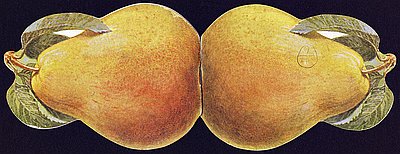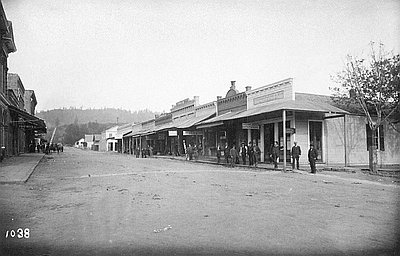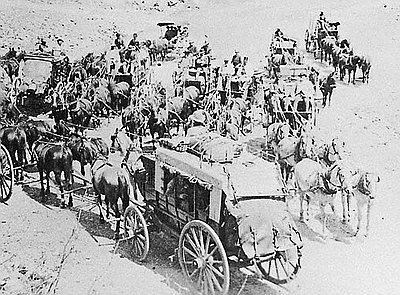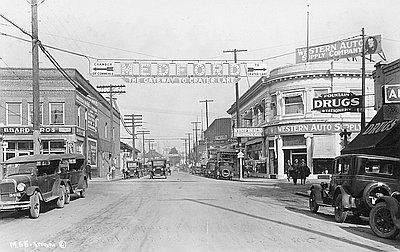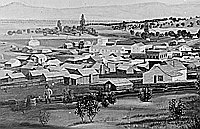Native American Cultures
Then Coyote said, People shall spear salmon, they will go to get food, to one another will they go to get food; one another they will feed, and they shall not kill one another. In that way shall the world be, as long as the world goes on.
This creation story, recorded by anthropologist Edward Sapir in 1906, suggests how intensely Native peoples linked life to the sun, moon, and wind, with mountain, rock and stream, deer, coyote, and bird. Native peoples lived in southwestern Oregon for thousands of years prior to Euro-American contact. While they did not easily win survival—obtaining food and shelter consumed most of their energy—they ensured sustenance from the landscape by controlling natural processes, especially through the use of fire.
Southwestern Oregon Indians shared a similar environment and culture. What little is known of their lifeways and economic systems during the past ten thousand years comes from archaeological investigations, climate and environmental studies, and extrapolations from ethnographic and historical records. All of these sources suffer from a lack of data. Only in the past few decades have archaeologists accumulated sufficient information to begin to assess the cultural changes that have occurred since humans first occupied the region.
Current theory suggests a date for human entry into the Pacific Northwest at the end of the last Ice Age between 12,000 and 14,000 years ago. Scientists have obtained a radiocarbon (C-14) date of 13,200 BP (before present) from cultural deposits at Paisley Cave in central Oregon. By 11,500 BP, small groups of people spread across the continent pursuing the large game that inhabited North America in the moist, post-glacial environment. Nomadic, Paleo-Indians used a distinctive style of spear point named for the small town of Clovis, New Mexico, near where they were first discovered. Archaeologists have associated the large, finely made spear points with megafauna such as mammoths, horses, camels, and giant bison that once roamed the continent. The discovery of isolated Clovis points—although not associated with megafauna—in southwest Oregon near Roseburg, Butte Falls, Hyatt Lake, and the Oregon-California state line, confirm the presence of Paleo-Indians in the region during this early period.
When the climate warmed in the post-glacial period, vegetation changed and large animal species became extinct. The nomadic, big-game hunting way of life gradually shifted to a hunting-and-gathering existence that archaeologists term the Archaic period. Beginning around 10,500 BP, the Archaic period lasted in the Pacific Northwest until contact with Euro-Americans in the nineteenth century.
Recent excavations along the southern Oregon coast by Oregon State University archaeologists document settlement in this region as early as 10,430 BP. Native peoples based their economy in this period on a variety of plant, animal, and fish resources. They developed techniques for gathering, processing, and storing foods as well as weapon technologies. Through the Archaic period, Native settlement patterns, domestic architecture, social structures, and land management practices reflected gradual changes in the natural environment and the pressures of their steadily increasing population.
Our fragmentary knowledge of the Native way of life prior to the arrival of Euro-Americans comes from the recollections of a few elderly informants. Their memories describe seasonal subsistence patterns, reveal religious and ceremonial practices, and give us snapshots of daily life. Archaeologists can project those same patterns and lifeways back in time to help explain the archaeological record, but they must proceed cautiously. The ways of life captured in ethnographic accounts and historical documents reflect only a moment in time, and conditions in 1840 were probably quite different than those one thousand, five thousand, or ten thousand years earlier.
By the late eighteenth and early nineteenth centuries, the southern Molalla occupied the mountainous regions of the Cascades to the east. The Takelma resided in a territory that centered on the upper Rogue River drainage and extended east up Little Butte Creek to the crest of the Cascades. To the south, they inhabited portions of the Bear Creek Valley, sharing it with the Shasta people. To the west, the Applegate River Valley and Galice Creek marked the boundaries with the Athapascan, the Dakubetede, the Taltuctuntede, and the Shasta Costa band of Tututni. Farther west, along the coast, several other Athapascan groups lived on the principal rivers of the coastal plain, including the Upper Coquille, Kwatami, Tututni, Chetco, and Tolowa. Umpqua people occupied the Cow Creek drainage, inland and north of the Rogue River Valley. All of these groups shared a roughly similar environment and a common way of life centered on hunting, fishing, and gathering. The availability of resources, such as marine fisheries and anadromous fish runs, resulted in slightly different subsistence and settlement patterns.
The Takelma of the upper Rogue River are perhaps the best documented Native group of the region due to anthropologist Edward Sapir’s work early in the twentieth century. The Takelma, as defined by language dialect, comprised two, and possibly three, distinct groups. The principal villages of the Lowland Takelma were on the Rogue River, extending from present-day Gold Hill downriver to about Grave Creek. The Upland Takelma winter village was farther upriver in the lower Bear Creek Valley, near Table Rock (near Medford), as far east as Ashland, and in the Little Butte Creek drainage.
The Takelma augmented their staple vegetal foods of acorns and camas with a variety of root crops, manzanita berries, pine nuts, tarweed seeds, wild plums, and sunflowers. They found protein in anadromous fish—especially salmon—and in deer, elk, rabbits, squirrels, and certain insects. The Takelma fished for salmon during the seasonal spawning runs, although not every fish-bearing stream had runs of fish every season.
The Takelma located their permanent winter villages in the low-elevation river valleys near predictable food resources, such as reliable fishing locations and acorn groves. During the warmer months, they moved to seasonal base camps in the uplands to hunt, to gather ripening crops, and to procure materials for chipped-stone tools.
Because of the Takelma’s seasonally fluctuating food sources and their need to gather widely scattered vegetable and animal foods in the upland areas, families and communities were isolated. The periods of isolation hindered development of any strong central authority in the region. Instead, the local village community was the principal social and political unit.
In the Takelma worldview, supernatural spirits associated with plants and animals—believed to be manifestations of primeval earthly inhabitants—determined nature’s forces and human fate. A few Takelma stories concerning the activities of these beings, taught to children to help them learn to survive, were relayed by older Native informants to early twentieth-century ethnographers. Tales of Coyote, Beaver, and Acorn Woman taught listeners how to protect deer herds from overhunting and how to think about drought, famine, and floods. In the story of Rainmaker, for example, “A stout man named Khu-khu-w came…to Table Rock and the Rogue River was low and the Table Rock Indians could not catch salmon. The Table Rock Indians hired that man to make rain, and it flooded all this lowland.”
© Kay Atwood and Dennis J. Gray, 2003. Updated and revised by OHP staff, 2014.
